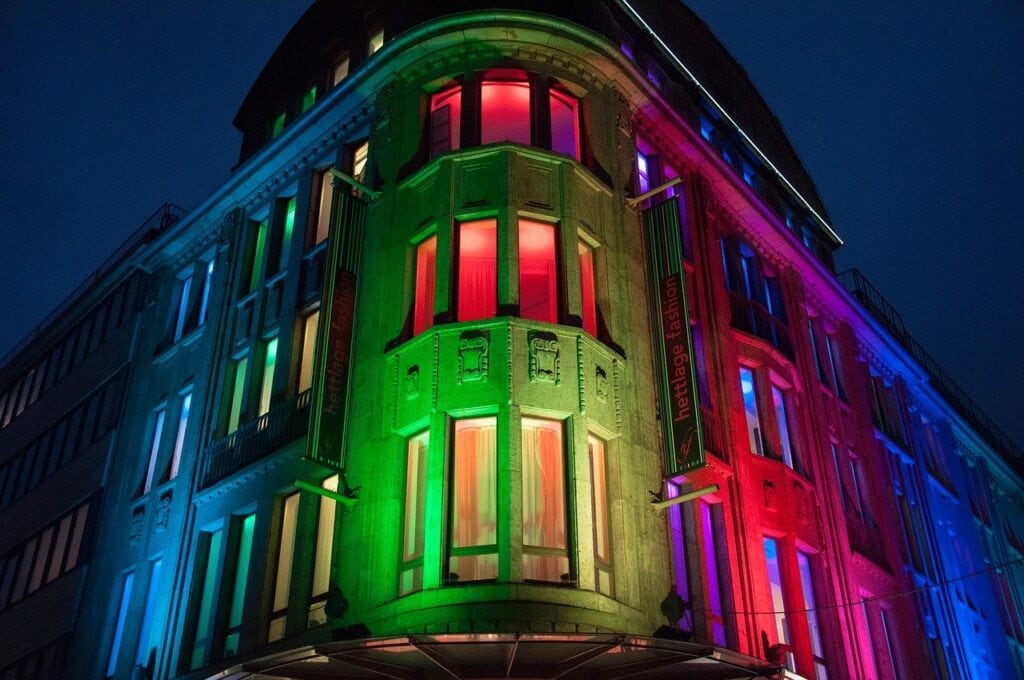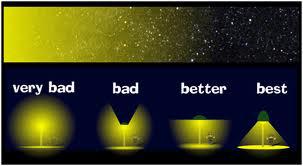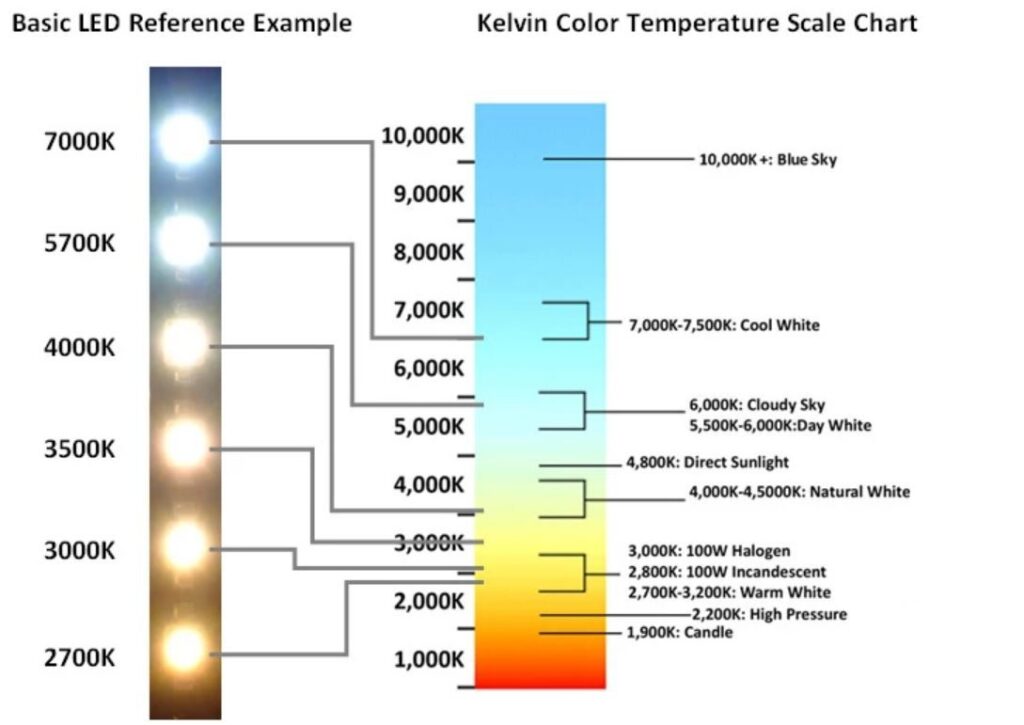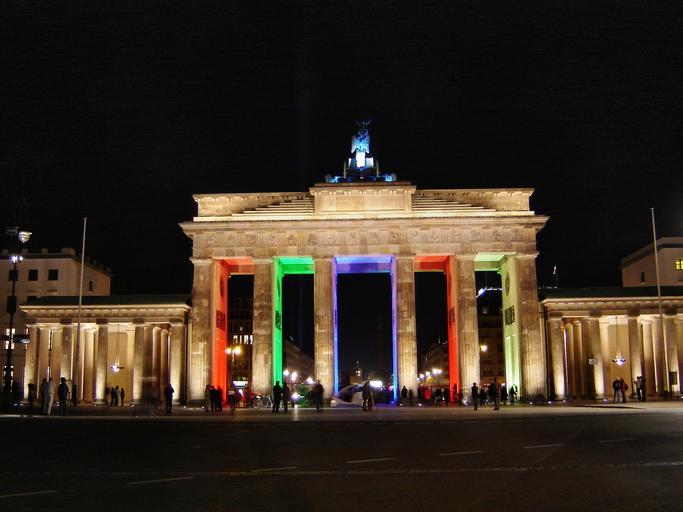If you think the material, texture, color, and details determine the final look, think again. It’s that lighting design that determines that. Since the facade gives the first impression in any building, you need to pay attention to its facade lighting.
Suppose you want it to give justice to the architectural vision that gave life to it, read on. This article will discuss the standards, rules, and various considerations to help you light up a building’s facade correctly.
What is architectural facade lighting?
Architectural facade lighting compliments the exterior of any building or structure. A facade refers to the frontal exterior of an architectural structure. That means this type of lighting is a technique that highlights the frontal part of a building – whether that is to light as a whole or to highlight only specific parts or designs.
In architecture, the facade is the most important part of the design. Why? Because this is the part that people see first. It sets the overall feel for the rest of the structure if it gives a great impression.
This is why highlighting the facade is of utmost importance. It’s a popular trend when it comes to lighting design. As amazing as the architectural design may be, it all fades into darkness once nighttime comes. Installing the right light fixtures around it is the only way to make it come to life at night.
But the benefit doesn’t stop with the actual building itself. It extends to the surroundings. Believe it or not, a beautiful building can enhance the surrounding area – making people want to come and see it.

Three aspects that define the importance of facade lighting
There are many reasons why architectural facade lighting is important. It goes beyond the aesthetic. Sure, the obvious reason for this type of lighting technique is to highlight the features of the building. But it would be best if you didn’t dwell on that. It’s not just to give it an artistic feel.
Once you understand how it can benefit the building, you’ll know how to plan its design and application. The key is to focus on how to make people understand and experience the true value of architecture. Use the lighting technique to increase the emotional value of the architecture.
Do you believe that’s possible? Of course, it is.
With that in mind, here are the three aspects that define why architectural facade lighting is important.
Aesthetic
Every time you see something so beautiful, you’ll notice that it elicits a certain emotional response from you. What happens when emotions are present? That moment becomes memorable. Our memories are our recollections of our emotions during a specific time. So if you can make someone feel something just by looking at the aesthetic appeal of a building, that’s an accomplishment. The best way to set this mood is through lights.
It doesn’t matter if it’s for the people occupying the space or the spectators visiting or passing by. You want them to feel something when they look at your building. With proper lighting, you can set the right mood for that. It then becomes easier to draw people in.
Function
Functionality is another reason why proper architectural facade lighting is important. The main function of lights is to help us see. With sufficient lighting, accidents are less likely to happen. It’ll make everyone feel safer because they can see their destination and surrounding areas.
Not only that, but lights can discourage trespassers from getting near. This gives you a certain reassurance that your safety and protection are intact.
Green and sustainable
Unlike the first two, this will depend on what type of light fixtures you will use. But if you have to work on the architectural facade lighting of your building, make sure it’s both environmentally sustainable. How do you do that? Make it energy efficient.
Using LED lights is a great way to do this. These lights can emit enough brightness without consuming a lot of energy. For instance, a 10-watt LED light can give the same illumination level as a 100-watt incandescent light bulb. That’s good for the environment and, at the same time, will help you save money on your electric bill.

Three options for architectural lighting
Once you’re ready to design your facade lighting, it’s best to start by knowing the techniques you can use. It’s important to remember that you can mix and match these different techniques. Just make sure it complements the design that you want to achieve for your building’s facade.
Here are the three techniques you can choose from.
Uniform illumination
Uniform illumination means you are casting the same brightness on a vertical surface. You can achieve this by using floodlights – but it’s not mandatory. Any light fixture that can accentuate the style characteristics of a building is ideal for this purpose.
Whatever light fixture you plan to use, you can place it above the structure (usually in a nearby building) or on the ground. What’s more important is the distance of the light fixture from the surface that it will illuminate.
It’s important to remember that when you use floodlighting, you also have to consider directional light. This way, the lights can highlight the details of the building. These lights are usually smaller and emit a weaker brightness than the main floodlights.
Local lighting
This lighting technique focuses on specific points in the vertical facade of the structure. This could be the columns, elevation, or even plates. Using local lighting, you won’t just highlight the masterpiece in the details of the structure. You can also tie it with the other lighting technique used on the ground – like what you use on the plants, garden paths, or other lower landscape decorations.
Hidden illumination
This is the most challenging of all the lighting techniques that you can use. However, if you can execute this properly, you can achieve a great dramatic look in your facade lighting application.
There are different ways to do this. One is to use the silhouette technique. You create shapes through the right angle of the lights without focusing on individual elements. Another technique is contour. This gives the structure a certain glow that projects a dramatic effect or mood. To apply this, you use LED strips.
Other techniques allow you to give the structure a backlight effect that creates light shadows that look beautiful from the front.
Other facade lighting techniques
Aside from the three architectural facade lighting techniques, there are other ways that you can create a dramatic look through lights.
- Direct lights. These refer to light fixtures that are right on the facade itself. Take the media facade as an example.
- Grazing. This technique is when you place a light fixture close to the vertical surface – usually at the bottom. The idea is to use bright illumination starting from the bottom and gradually fading as the light increases. This is great for highlighting surfaces with textures.
- Washing lights. This technique seeks to highlight flat facades. This helps give life to what would have been a boring surface. To achieve this, you have to place the light fixture a bit far from the facade.
- Accentuating. Unlike the previous technique, this one is closer to the facade, creating a more dramatic effect. This makes it perfect for the building’s facade’s openings, columns, and similar architectural details.
2 general standards to follow in architectural facade lighting
When you’re planning the application of architectural facade lighting, there are two standards that you can follow.
The first is the function of the building. This means you have to ensure that the lighting technique you’ll use supports the functionality of the building. This is also true for the specific parts or areas of that building (entryways, windows, etc.).
The second involves the architectural culture that the building represents. The goal here is to enhance the culture that the architectural design tries to portray through the proper use of lights.
Let’s dwell further into all of that.

The function of the building
It’s always wise to consider the overall function of the building. For instance, if you’re lighting a commercial building, you want to ensure harmony in the facade’s illumination. Since the building is primarily commercial, you want it to appear prosperous. What does that mean? Using light shades and light hues should make that happen. You want it to stand out so people can see it from afar. When done correctly, this building will exude a strong presence – making it known to people who initially had no intention of going near it. That’s how powerful architectural facade lighting can be.
The approach is different if you’re lighting educational buildings like libraries or teaching facilities. You want to mix elegance and culture in the lighting technique. Hospitality buildings, including stand-alone restaurants, should exude brightness and relaxation at the same time. That way, people know that this is a place to rest and enjoy. A mixture of white and colorful light will do the trick for these two public building references.
What about residential facade lighting? You want to go for warmth and comfort. That means using yellow hues and anything that won’t be too glaring. This is a place of refuge. So the lights should be intimate.
Apart from the general function of the building, the facade lighting should also consider different areas. For instance, the entryways should have a specific lighting application. The same is true for connected pathways around the building and windows. Lighting these properly will ensure that their use will be convenient for everyone.
Architectural culture
The second standard that’ll help with facade lighting is to properly express the architectural culture. Is there a specific culture that the building is paying homage to?
For instance, a religious sanctuary can use lights to highlight designs and structures that pay tribute to the religion, like the cross or statues outside a church. Using spotlights to create silhouettes can work here.
A building structure that boasts unique designs can use lights to focus on the elements that make it one-of-a-kind. Using silhouettes or shadowing can work perfectly here. The Bird’s Nest Olympic Stadium in Beijing is a great example here. The way it lights up at night is simply spectacular. It perfectly showcases the ingenuity and genius of Chinese culture.
Different methods express the architectural culture through facade lighting.
One is through color. The right hue will boost the symbolism that the architecture of the building is portraying.
Uplighting is also an interesting method to use. During the day, the natural light casts shadows onto the building. But at night, the uplighting effect will showcase a different building feature.
You can also play with the brightness of your light fixture. This will create a lively atmosphere that’ll make the building come alive. Focus on the edges of the structure to highlight the architecture’s shape, sculpture, and symmetry.
Keep in mind that architectural facade lighting can mix different lighting techniques. Just ensure that you won’t drown the building when you do it. Remember, lights should enhance what’s already there. It shouldn’t steal the show.
6 rules when designing the facade lights
Now that you have a clearer understanding of the two standards that’ll guide the design of your architectural facade lights, what’s next?
It’s time to know the rules to ensure your applying the lighting techniques is correct. Before you do this, it’s important to understand the purpose and function of the building. While you want to highlight the structure’s aesthetic, it shouldn’t overshadow its actual purpose. If anything, the lights should support or enhance that purpose.
Given that, here are the important rules that you should follow.
It should be in harmony with the purpose.
The design of the lights should meet the requirements that synchronize it with the structure’s very purpose. For instance, the Water Cube in Beijing is the National Aquatic Center constructed for the 2008 Olympics. If you look at the facade lighting of this structure, it changes to reflect the movement of the water it represents. This is mainly for aesthetic purposes, but you can see how it enhances the design and purpose of the structure.
It should comply with regulations.
Since this involves external lights, you don’t want the authorities to question it. This is why the architectural facade light design should comply with the regulations within your community. For instance, if you’re using it to light up your home, you want to ensure that it meets the brightness limits of the neighborhood – if there are any.
The national standards also encourage everyone to use energy-efficient light fixtures. It avoids wasting energy and is better for the environment because it does not have harmful emissions.
It should achieve the best artistic effect.
There are many ways to light the facade of a building. There are also several light fixtures that you can use. From spotlights to floodlights and LED strips, media facade lighting, and wall washers – all these can provide a dramatic effect. You can also play with different hues and directional lighting techniques. The important thing is that the lights won’t overpower the design of the building.
It should avoid light pollution.
Before installing the facade lights, make sure you check for regulations when it comes to light pollution. This is especially true if you’re building or home is near a busy road. At night, vehicles rely on lights to see and get directions. You don’t want your building or home to be too glaring for them that they miss out on important signs. It’s not just about the brightness. The angle and positioning of the light are also important. If you have light fixtures that move, they shouldn’t end up blinding anyone – whether driving or walking by.

It should use colored lights carefully.
This is in connection with the last rule. Colored lights bring life to any structure. But if it’s blinking lights that use red and blue – it may confuse people and make them think these are police cars or fire trucks. Make sure you use colors that won’t interfere with actual traffic or shipping lights – if the building is near the water. Be aware of the surroundings to ensure they won’t be a hazard, especially during emergencies.

It should correspond to safety precautions.
Lights still run on electricity. This is why the architectural facade lighting should ensure safety from electrical fires. You also shouldn’t use too many lights. It should just be enough so it won’t be a hazard to the environment. Get a professional with the training and license to install the lights. This will ensure the installation is correct and within the community’s standards.
General rules when organizing facade lights
Apart from these, there are other general rules that you may want to pay attention to.
- Position the lights to provide both aesthetic appeal and sufficient lights to allow safe movement at night. Use powerful lights like floodlights to disguise flaws in the structure.
- Lighting walls is best done using spotlights or lamps. Place it where you can easily change the lights – whether it’s the bulb or the angle of the light fixture.
- Use LED lights to meet energy-efficiency requirements. This is the light fixture that industry experts prefer. LEDs consume minimal energy and, at the same time, will still provide uniform lighting.
- A single style of light fixtures will show harmony in the lighting design. If the style chosen is in coordination with the architecture of the building, it should blend well with its surroundings.

2 important questions in architectural facade lighting
Designing architectural facade lighting is simple as long as you know what to focus on. Even if all the light fixture choices and the different applications feel overwhelming, there’s something you can do to stick to your priorities.
If you want the application to be as flawless as possible, there are two questions that you need to answer.
What to light?
Start by asking yourself, what exactly do you want to light up? Time and again, you probably read it in this article. The lights should not overpower the design of the building. That means you don’t have to light everything. Choose the areas that you want to light. Usually, these should be places or areas that will have the most impact.
Are you trying to highlight the architectural culture? That’s one way to define what you should be lighting up. Look at the building’s columns, spires, windows, and other design elements. These could be focal points that you can highlight and illuminate.
You can also look at the positioning of the building and the neighboring structures. If you’re going to improve the aesthetic of the facade, you want it to be highly visible. What areas should you light up to have the maximum impact on those viewing it or simply passing by?
How to light it?
The next question that you should answer is how to light it. As you know, there are many fixtures that you can use to enhance the beauty of the building’s facade. How will you know which one to choose?
You go back to the design intention. Do you want to highlight the function of the building? What mood do you want to portray? You could go from welcoming to dramatic to mysterious – these are specific moods lights can accomplish. These important considerations will help you decide how you’ll light up the facade.
It also helps to consider the people who will be using the building. Where will they go? What do they need? If you can answer these questions, you’ll know the right lighting technique.
No matter what light fixture you choose, using LED lights is best. It’s not only energy-efficient, but it’s also very durable. You won’t have to worry about changing it all the time. Maintenance will be low and cost-efficient.
Other considerations when choosing architectural facade lighting
As you learn more about architectural facade lighting, you’ll realize how many possibilities there are. While you focus on the design of the lights, other considerations will help tie it up with everything in its surroundings.
For buildings in the urban space
Before you design the facade lighting of buildings in urban areas, it’s important to consider the space of buildings surrounding them. If residential buildings are beside it, you don’t want your facade lights to look too bright. It must be calm and soothing for those trying to rest at night. But if it’s mostly other commercial buildings, it’s okay to make it as lively s possible – especially if these buildings operate until late at night.
For buildings with minimal visibility
If the building isn’t positioned with maximum visibility, going all out with the face lighting may not be worth it. If nobody sees it, then keep the lights subdued. Just focus on security and protection. That means keeping the lights bright enough to discourage trespassers and intruders. You can install light fixtures that’ll highlight the impressive design elements of the building. But stick to the prominent ones that define the character and mood you want the building to portray.
For residential use
Installing facade lights on residential properties follows different rules. If the building is in a residential neighborhood, you must use calmer lights. Even if it’s at the end of the road with nobody there – it doesn’t make sense to make the house too bright if the surrounding area is too dark. It’ll just make the property stand out unnecessarily.
Another thing, the facade lighting can represent the personality of the owner – or the people living inside. That should give the house character, making the owner feel more at home. If the people living there are mostly laid back, intimate lighting techniques should do the trick. Making it cozy is perfect if it’s a family that resides within.
Think about maintenance and repair.
Whether for a commercial or residential building, it’s important to keep maintenance and repair in mind. These lights are outside. That means it will go through weather changes and conditions. The lights you’ll use should withstand the heat of the Sun and the pouring rain without failing.
Even if you use LED light, it will still require changing. Ensure you can reach the fixtures and there’s a safe way or route for maintenance. These will need cleaning now and then too.
Conclusion
Architectural facade lighting isn’t as simple as choosing and installing the lights. You have to keep the design intention in mind to know how to choose the right light fixture and its proper application.
Does this get you excited about designing the facade lighting of your building?




